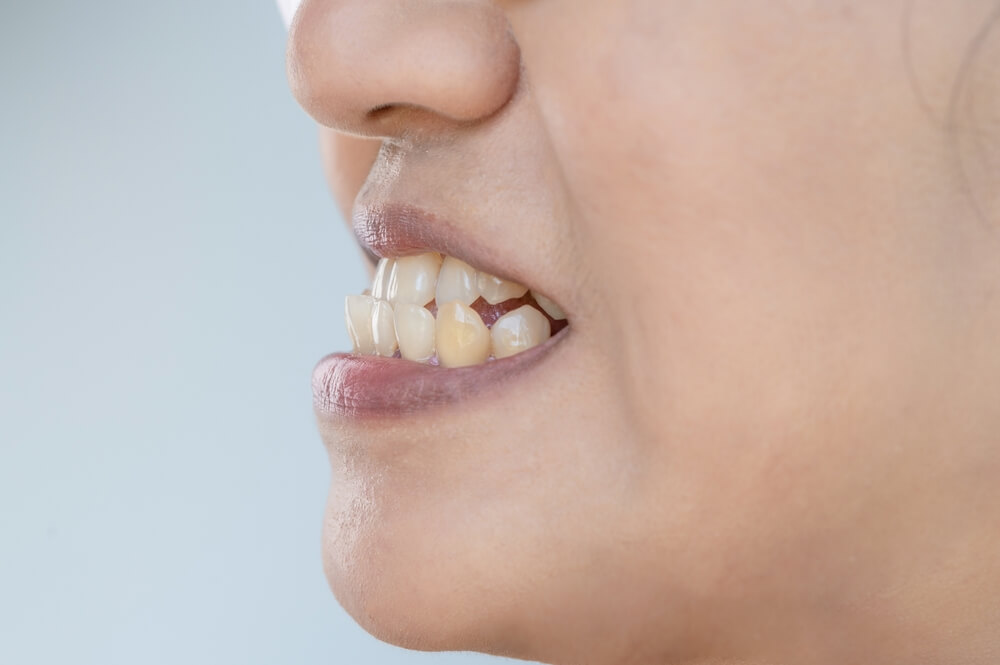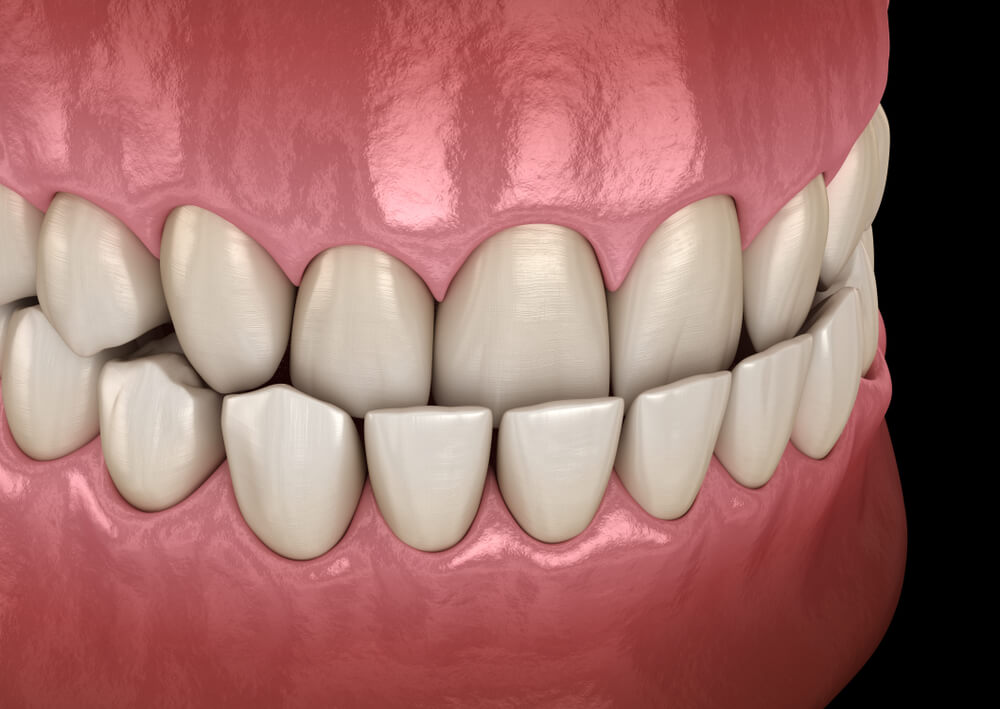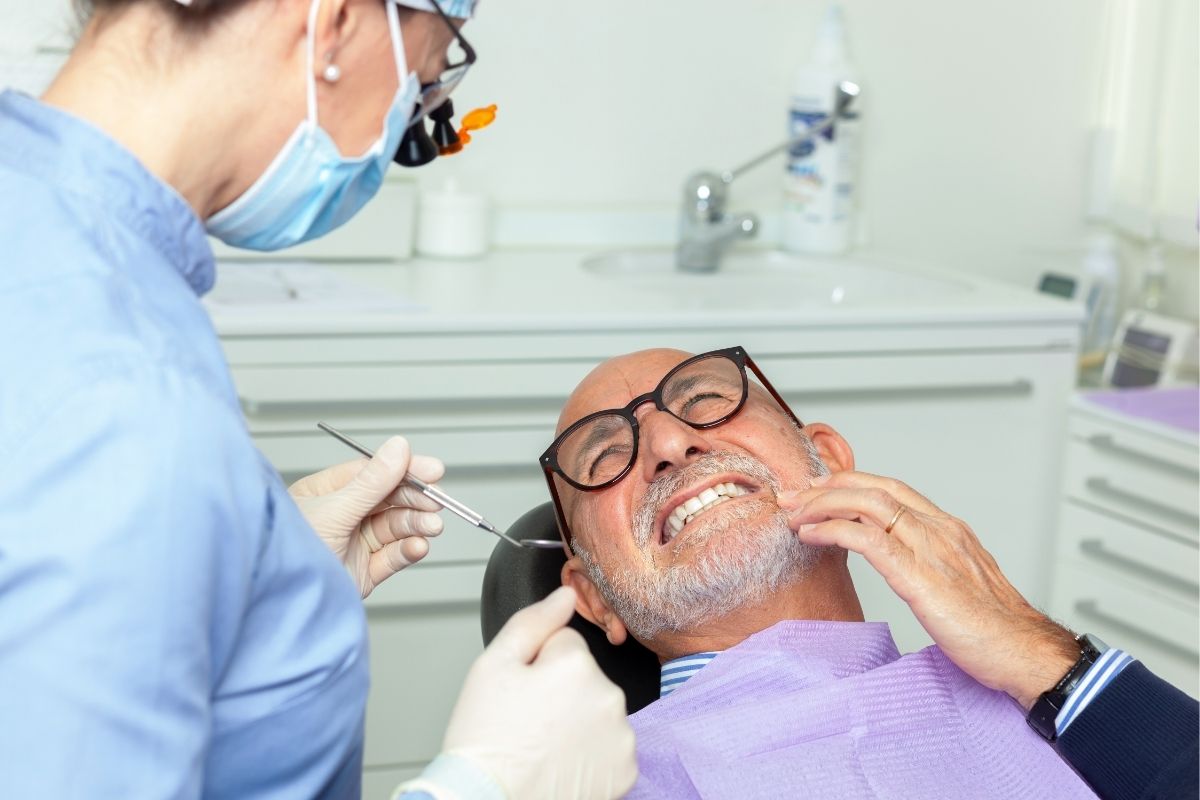Underbite, also known as prognathism, is a dental condition where the lower teeth protrude beyond the upper teeth when the mouth is closed. It’s like having a “J Leno” jaw, where the bottom teeth are significantly more forward than the top teeth.
What Is Underbite?
Underbite, also known as prognathism, manifests when the lower jaw protrudes beyond the upper jaw, resulting in the lower teeth overlapping the upper teeth. This misalignment presents a spectrum of severity, spanning from minor deviations to more pronounced cases that significantly impact dental and facial aesthetics. If your dentist believes you have developed an underbite, this will most likely be made aware in your dental exam.
Description of Underbite

Underbite classification involves distinguishing between dental and skeletal underbites, each stemming from distinct underlying causes. Dental underbites arise from irregularities in tooth alignment, whereas skeletal underbites are attributed to misalignments in the jaw structure itself. The severity of the underbite plays a pivotal role in determining the most appropriate treatment strategy, guiding orthodontic interventions, or surgical correction methods tailored to individual needs.
Causes of Underbite
The development of underbite stems from a multitude of contributing factors, encompassing genetic predispositions, habitual behaviors during childhood such as thumb-sucking or tongue-thrusting, and traumatic injuries to the jaw. Furthermore, specific skeletal conditions or abnormalities can exacerbate underbite formation, highlighting the complex interplay between genetic, environmental, and anatomical influences on dental and facial development.
Understanding these diverse etiological factors is crucial for accurately diagnosing and effectively addressing underbite-related concerns through tailored treatment approaches.
Stability of Underbite
Despite its departure from conventional bite alignment, underbite is typically characterized by stability within the jaw structure, providing individuals affected by this condition with a foundation for normal oral function and quality of life. The underlying anatomical integrity of the jaw remains largely unchanged, allowing for effective chewing, speaking, and other essential activities without notable hindrance.
Consequently, many individuals with underbite experience minimal functional impairments and can navigate daily activities with relative ease and comfort. This stability underscores the importance of recognizing underbite not solely as a cosmetic concern but also as a manageable dental condition that, with appropriate care and attention, allows for sustained oral health and well-being.
Stable Bite with Underbite
Despite the aesthetic differences, underbite often results in a stable bite. This means that the misalignment does not typically interfere with normal chewing, speaking, or other oral functions. Individuals with underbites can still enjoy a comfortable bite experience.
Correcting Underbite with Orthodontic Treatments
For those seeking to address the appearance of an underbite, orthodontic treatments like braces or Invisalign offer potential solutions. These methods focus on adjusting the position of the teeth rather than altering the jaw structure.
Invisalign and Braces for Underbite Correction
In cases where the primary concern is dental alignment rather than jaw positioning, Invisalign or braces may be effective. These treatments gradually shift the teeth into proper alignment, improving the overall appearance of the smile.
Surgical Intervention for Severe Underbites
In instances of severe skeletal underbite, surgical intervention may be necessary to correct the jaw misalignment. This procedure involves breaking and repositioning the jawbone to achieve proper alignment between the upper and lower jaws.
Considerations for Underbite Surgery
Underbite surgery is typically reserved for cases where non-surgical treatments are ineffective or insufficient. It’s important to consult with a qualified oral surgeon to assess the severity of the underbite and determine the most appropriate course of action.
In Summary

Underbite, while presenting a deviation from the norm, can often be managed effectively through various treatment modalities. Whether opting for orthodontic solutions or surgical intervention, individuals with underbite have options to improve both the function and aesthetics of their smile. For personalized guidance and treatment options, contact Indian Trail Dental today.




